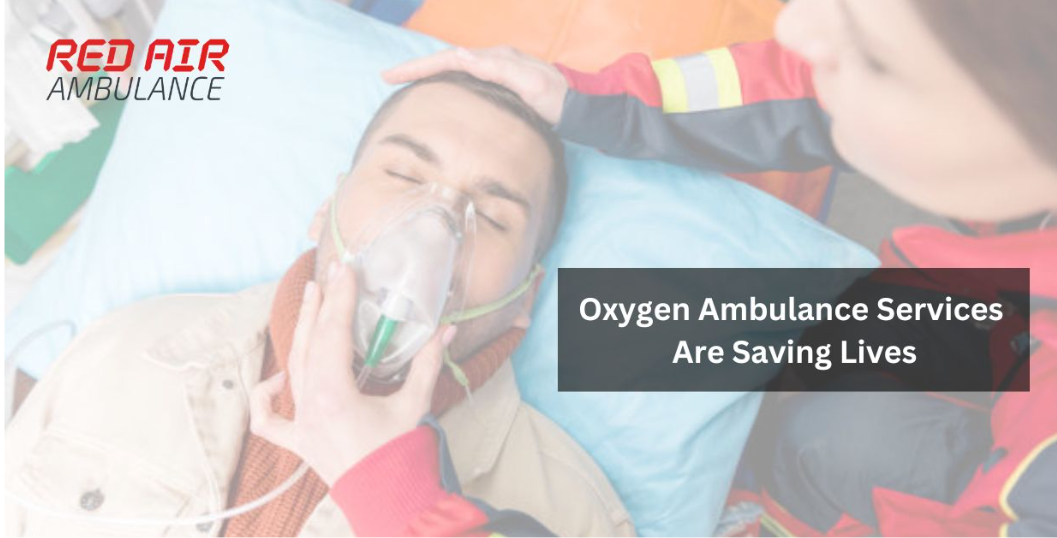In medical emergencies, timely access to oxygen can mean the difference between life and death. Oxygen ambulance services play a crucial role in transporting patients experiencing severe respiratory distress, ensuring they receive life-saving oxygen support en route to a medical facility. These specialized ambulances are equipped with oxygen supply systems, ventilators, and trained medical personnel, making them essential for handling critical respiratory emergencies.
Understanding the Role of Oxygen Ambulance Services
An oxygen ambulance is a specially equipped emergency vehicle designed to provide continuous oxygen therapy to patients suffering from breathing difficulties. These ambulances cater to individuals with conditions such as:
- Severe asthma attacks
- Chronic Obstructive Pulmonary Disease (COPD) exacerbations
- Pneumonia and lung infections
- COVID-19 and other respiratory illnesses
- Carbon monoxide poisoning
- Heart failure leading to respiratory distress
By providing on-the-spot oxygen therapy, these ambulances prevent further deterioration and improve the chances of patient survival before reaching the hospital.
Key Features of Oxygen Ambulance Services
1. Onboard Oxygen Supply
Oxygen ambulances are stocked with medical-grade oxygen cylinders, concentrators, and flow regulators to ensure an uninterrupted supply of oxygen for patients in need.
2. Trained Medical Personnel
Each oxygen ambulance is staffed with trained paramedics, respiratory therapists, and emergency medical technicians (EMTs) who monitor and manage patients requiring oxygen support.
3. Advanced Life Support (ALS) Equipment
Many oxygen ambulances are also equipped with:
- Ventilators for patients who need mechanical breathing support.
- Pulse oximeters to monitor oxygen saturation levels.
- Nebulizers for administering breathing treatments.
- Suction devices to clear airways if needed.
4. Rapid Response and Real-Time Monitoring
These ambulances are integrated with GPS tracking and emergency response systems, ensuring the fastest possible route to the hospital. Some even have telemedicine support, allowing paramedics to consult with doctors in real time.
The Life-Saving Impact of Oxygen Ambulances
1. Immediate Oxygen Support in Critical Situations
Patients suffering from hypoxia (low oxygen levels) require urgent oxygen therapy to prevent complications such as organ failure, brain damage, or death. Oxygen ambulances provide immediate relief, stabilizing patients before they reach a hospital.
2. Essential During Pandemics and Public Health Crises
The COVID-19 pandemic highlighted the importance of oxygen ambulance services. As hospitals struggled with oxygen shortages, these ambulances played a vital role in transporting patients while maintaining continuous oxygen support.
3. Facilitating Safe Inter-Hospital Transfers
For critically ill patients who require higher-level care at another medical facility, oxygen ambulances ensure safe and stable transfers without compromising respiratory function.
4. Providing Emergency Support in Remote Areas
In rural or underserved areas where hospitals may be far away, oxygen ambulances act as mobile life-saving units, bridging the gap between emergency response and hospital care.
Choosing the Right Oxygen Ambulance Service
When selecting an oxygen ambulance service, consider the following factors:
- Availability & Response Time: Opt for services that provide 24/7 emergency support and quick dispatch times.
- Equipment & Medical Staff: Ensure the ambulance is equipped with oxygen tanks, ventilators, and trained medical personnel.
- Hospital Coordination: Choose a service that has strong ties with hospitals for smooth patient admission.
- Cost Transparency: Check for affordable pricing and insurance coverage to avoid unexpected costs.
Conclusion
Oxygen ambulance services are saving lives by providing critical oxygen support during respiratory emergencies. Whether for emergency situations, pandemic response, or inter-hospital transfers, these ambulances ensure timely, safe, and well-equipped transportation for patients in need. As healthcare systems continue to evolve, oxygen ambulance services will remain a vital part of emergency medical care, improving survival rates and patient outcomes.

